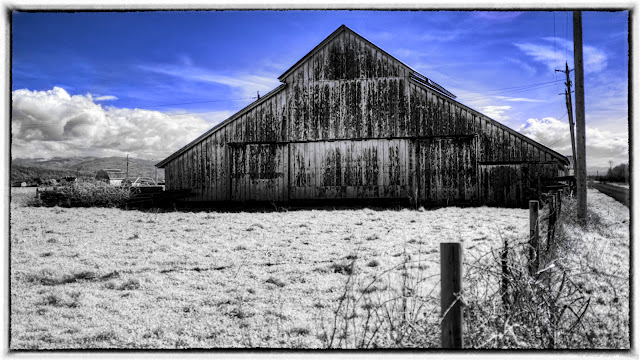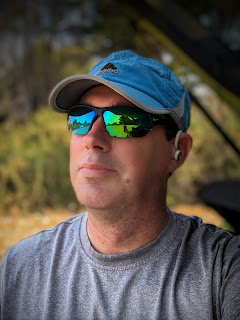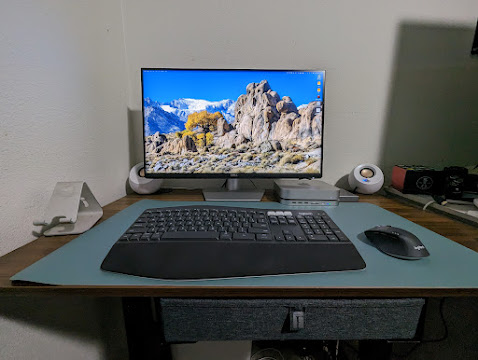 |
| Cool barn |
Recently a friend of mine shared with me some really great faux color infrared photos. Though he didn't know it the shots bummed me out because the quality of them were something I wouldn't be able to mimic until I permanently alter a camera to only shoot in the infrared spectrum. My main problem with how I shoot IR is that due to the very long exposure times I get so much blur that I can't stand looking at my own photos. So I decided to try and challenge myself and shoot trying to minimize the biggest weakness of my setup, blur.
On this really bright and sunny day (the same day I shot
this panorama) trees were ruled out because there was a slight breeze. Bushes were ruled out for the same reason. But a field seemed to do the trick. A field with a barn in it worked even better. Still trying to figure out just how to expose for IR I did a couple things different. First I set a custom white balance on the grass, with the IR filter on my lens. Then I put the camera on a tripod (mandatory when your shot is going to take 2.5 seconds), and, because I was playing with exposure times, put the camera in auto-bracket mode to take 7 pictures with 1 step of exposure value up and down. The same setting I use when I shoot HDRs, though I wasn't thinking of an HDR shot when I set this up. The shots came out odd, white balance wise. I was expecting various shades of red but got yellows leading to red. Thankfully I shoot RAW so a quick white balance adjustment fixed that. Then, well, things got crazy.
The images with a 0 and +1 EV turned out pretty good, but when I went to do some faux color on them they didn't turn out the way I wanted. I can't decide if the problem is my camera settings or my post processing work, or a combo of both, but I wasn't thrilled. Then I threw everything out and HDR'd the seven IR shots. It wasn't horrible when it came out, and certainly not nearly as bad as I was expecting, so I went to switch color channels in Pixelmator, and was generally pleased, but not with the field itself. So then, I got crazy. I took the faux colored HDR'd IR image into Silver Efex Pro with the whole point to get that white look in the field. Using more control points than I'd care to remember I brought back the very blue sky, and battled to keep the blue out of the clouds. I like what IR does to clouds so I tried to just keep them white. Brought out some contrast and detail in the barn, lightened the shadows up a bit in Aperture, and I was done. And, even more odd, I liked it. Just don't look to hard at the field details, it's still a bunch of mush.



Comments
Post a Comment